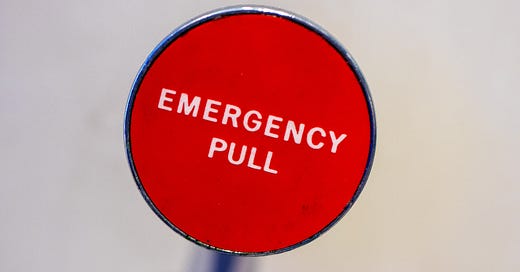“Hope for the best, but prepare for the worst.”
Do you have a plan? If so, do you people know it?
I sleep better when I know that, if something bad happens, we’ve got a safety net.
In case of fire, flood, or a large tree hitting the office*: we’ve got insurance.
In case of a computer virus* or hack: we’ve got an offline backup, as well as the cloud.
In case I am hospitalized after a freak accident: I’ve left a couple of lists labeled “What you should know” for my husband and a designated coworker. I also have a will and a living will.
In case we have to cancel a scheduled training session, we add a “snow day” to the calendar. In case we have to switch from in-person to virtual meetings, we have that set up*.
In case someone gets sick, we have protocols (“Don’t come in if you’re coughing or feverish!”). We have plans for when people are sick, when they need to stay home to care for children, when they are delayed by weather, traffic, or the drawbridge the train uses being stuck in the “open” position, with the train on the other side of the river from the training*.
For some people, this is an anxiety-provoking activity that sometimes occurs at a sleepless 2am. I recommend that you take a few minutes to think about what could happen. I then recommend that you think about how to protect against it, fix it, or work past whatever it is. Purchase the things you need to have in advance (insurance, computer backup drives, fireproof/waterproof storage for documents, etc.). Make a list of what people will need to know, check, or do. And then communicate to them what is in place in case something happens. You don’t need to give them every detail, but let them know, “Hey, if I’m ever hit by a bus, there’s a list in my top desk drawer of stuff you’ll need to know. It’s in an envelope with your name on it.”
Give your people a safety net.
* (true story)
(Photo by Jason Leung on Unsplash)



